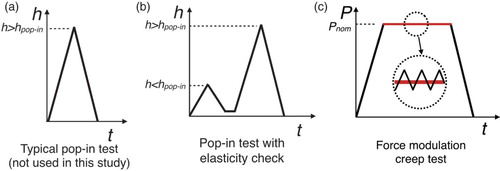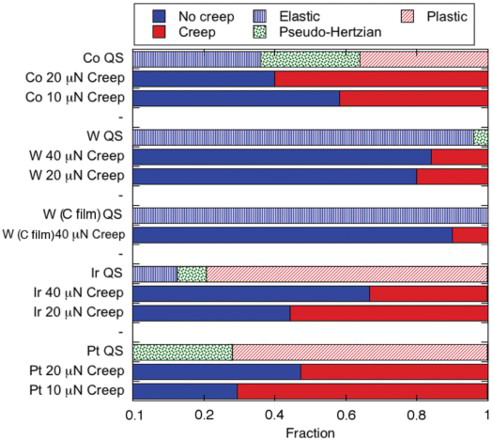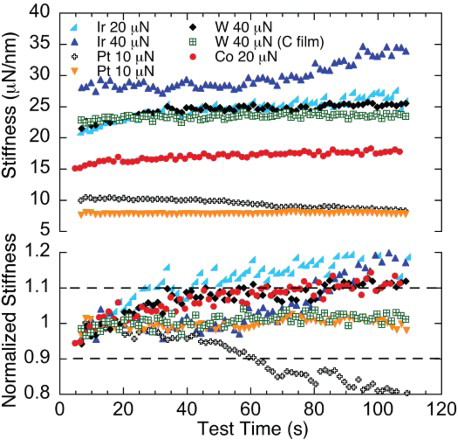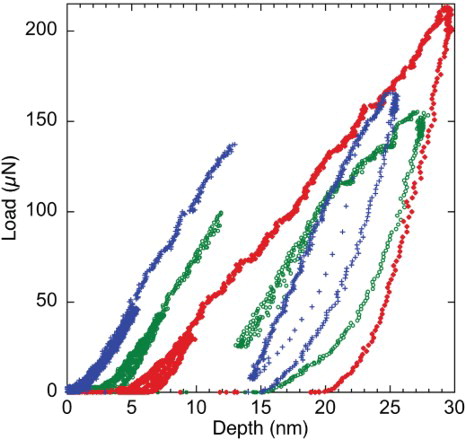Figures & data
Figure 1. Loading functions for QS and creep tests. (a) A typical test to determine pop-in load or depth. (b) The pop-in test with check for elasticity used in this study. (c) A force modulation technique creep test.

Figure 2. Typical QS curves from tests in Ir showing (1) completely elastic behavior prior to pop-in, (2) pseudo-Hertzian behavior prior to pop-in, and (3) gradual elastic-to-plastic transition with no pop-in (pseudo-Hertzian and plastic curves are depth offset for clarity).




